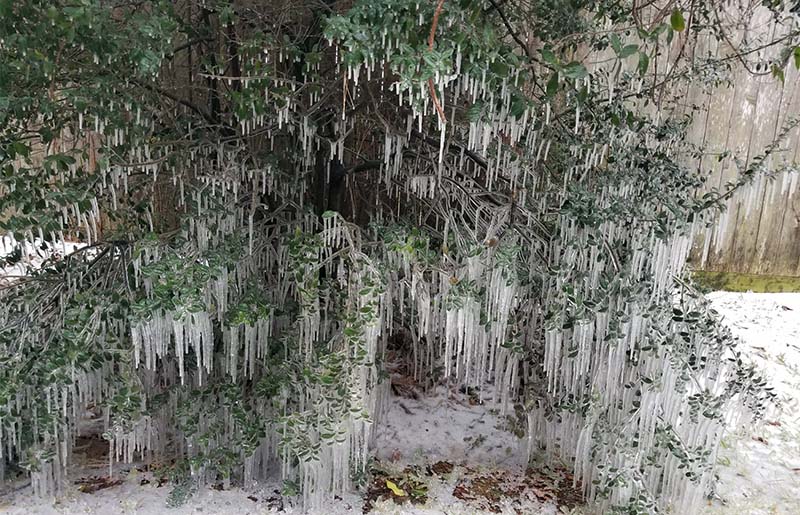
HCMG Shares Tips for Managing Freeze Plant Damage
Merry Christmas, fellow gardeners. After a series of hard freezes and temperatures staying below freezing for extended periods, we can certainly expect to see damage to tropical plants in our landscapes.
WHAT TO DO AFTER A FREEZE
Unless you are keeping them inside for the rest of the winter, move container plants back to their spots outside. Plants do not mind being moved in and out as needed through the winter. Container plants that were grouped together under covered porches and patios can be put back where they normally grow.
PRUNING
Do not prune anything for a week or more after a freeze. It often takes a week or so for all of the damage to become evident.
Damaged growth on herbaceous or non-woody tropical plants, such as cannas, elephant ears, birds-of-paradise, begonias, impatiens, philodendron and gingers, may be pruned away back to living tissue. This pruning is optional, and is done more to neaten things up than to benefit the plants. However, if the damaged tissue is oozy, mushy, slimy and foul smelling, it should be removed.
If you don’t prune before, be sure to cut back or prune these herbaceous tropicals in spring after danger of freezes is past and before they make substantial new growth (around late March).
You may remove the damaged foliage from banana trees but do not cut back the trunk unless you can tell for sure that it has been killed. It will look brown, feel mushy, feel loose in the soil and will bleed a lot if punctured. The exception would be any banana trees that produced a bunch of fruit last year. They will not send up any more new growth, and should be cut to the ground to make room for new shoots that will come up this summer.
Generally, it’s a good idea to delay hard pruning of woody tropical plants, such as hibiscus, tibouchina, angel trumpet, croton, ixora, schefflera, copper plant and rubber tree, until new growth begins in the spring and you can more accurately determine which parts are alive and what is dead. Dead leaves on woody tropical plants can be picked off to make things look neater.
If you can clearly determine what branches are dead on a woody plant you can prune them back. Try scratching the bark with your thumbnail. If the tissue underneath is green, it’s still alive. If the tissue is tan or brown the branch is dead. Start at the top and work your way down to see how far back the plant was killed. But it will not help the damaged plants to prune them (pruning is optional) and you can feel free to wait.









